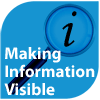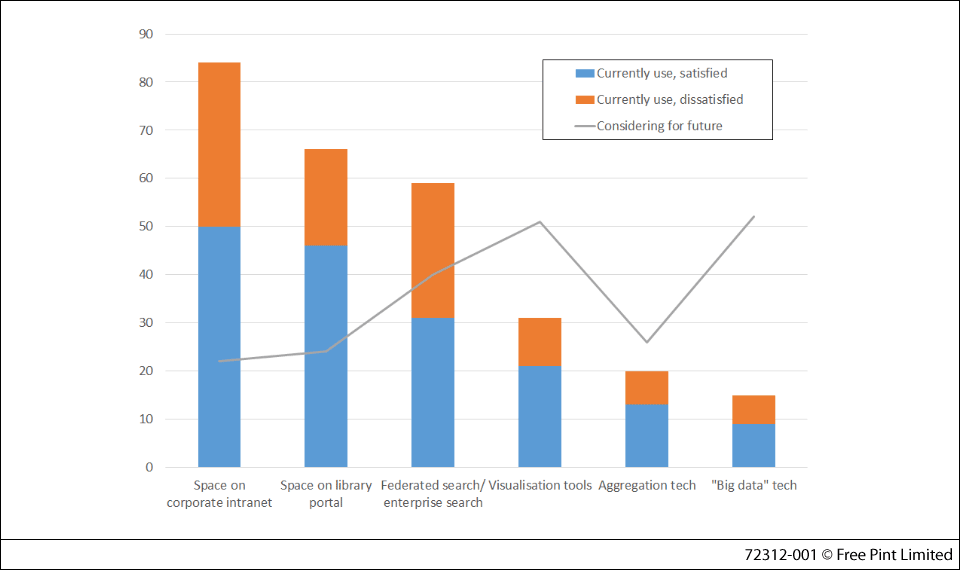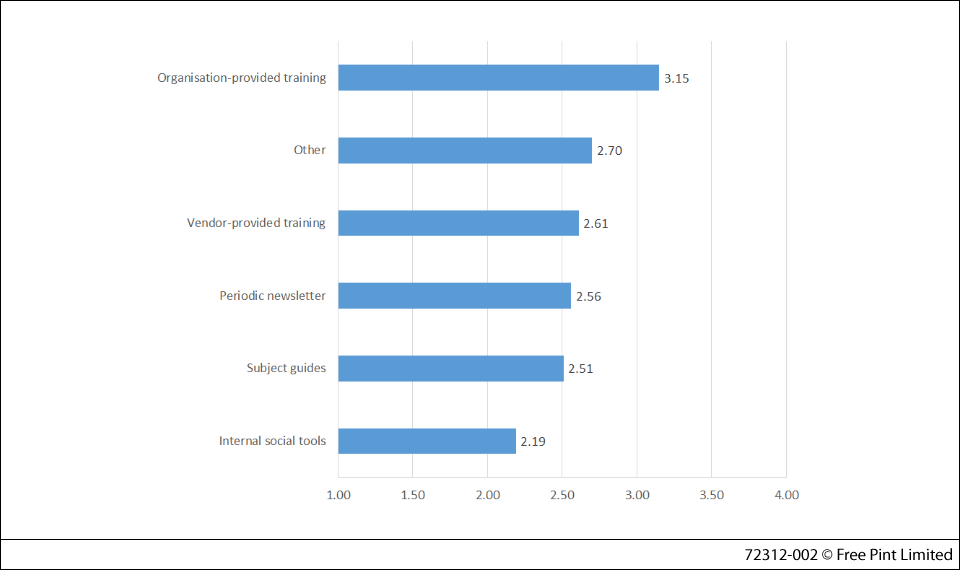 Defining Barriers and Opportunities in Visibility - Preliminary Survey Results
Defining Barriers and Opportunities in Visibility - Preliminary Survey Results
Jinfo Blog
24th February 2015
Abstract
We present the initial results from FreePint's research into making information visible and there's still time to complete the survey into discovery and visibility before it closes on March 6th. Research respondents will receive a copy of the full report upon publication.
Item
 Habits and history form the biggest barriers to making information more visible in their organisations, participants in the current FreePint Survey: Making Information Visible tell us. Getting the attention of users, retraining people to think differently about information resources and overcoming the siren song of free web searching are amongst the most-mentioned barriers to improving information visibility.
Habits and history form the biggest barriers to making information more visible in their organisations, participants in the current FreePint Survey: Making Information Visible tell us. Getting the attention of users, retraining people to think differently about information resources and overcoming the siren song of free web searching are amongst the most-mentioned barriers to improving information visibility.
Yet survey respondents - over 140 of them to date - are committed to experimenting with new approaches to visibility, and they are interested in finding alternatives to their current efforts.
Technology Brings New Approaches to Visibility
Figure 1 shows responses to date to the question, "What technologies support information visibility for end users within your organisation?"
For nearly every tool mentioned, the number of satisfied users is nearly equalled by the number of dissatisfied users. And as for the future, the largest number of respondents so far are considering data visualisation tools and "big data" technologies.
Figure 1
Tools Influencing User Behaviour
User behaviour is a critical element of making information visible, and yet it's the variable that information managers often feel they influence the least.
We ask respondents "How important are the following tools/approaches in influencing user behaviour around information visibility?" Each tool can be rated on a 1-4 scale, where 1 = not important and 4 = very important. Figure 2 shows average ratings to date.
Organisation-provided training earns the highest average rating, but this is a resource-intensive way to influence users... not to mention the fact that users are hardly looking for training sessions to interrupt their busy workdays.
At the bottom of the average ratings is "internal social tools" - yet these tools (e.g. Yammer, Chatter and the like) are low cost and relatively effective methods for user influence, when information managers can build a sustainable strategy around using them.
Figure 2
Complete the Survey
If this taste of the results is intriguing, take 5 minutes and complete the survey before it closes on 6th March. If you provide an email address at the end of the survey, you'll receive a copy of the full report upon publication later in March.
In the meantime, you may find these other resources in the FreePint Topic Series "Making Information Visible" of interest:
Webinars:
- User Behaviour and Visibility: 25th February
- Case Studies: Applying Technology to Visibility: 5th March
- Beautiful Information is Visible Information: 18th March
Communities of Practice:
- Needs Assessment for Information Visibility: 10th or 12th March
As content in this series is published, you can find it here. Register your interest in this series to stay informed about resources as they are released.
This Blog Item is part of the FreePint Topic Series "Making Information Visible".
- Blog post title: Defining Barriers and Opportunities in Visibility - Preliminary Survey Results
- Link to this page
- View printable version
- Mini Review of Commetric
Friday, 20th February 2015 - Surfacing Information via Activity Streams
Thursday, 19th February 2015 - Q&A with Acquire Media - Visualisation Delivers the Insight You Need
Monday, 16th February 2015 - Eight Steps to Good Management for Visible Information
Tuesday, 3rd February 2015 - Taking the Mystery Out of Big Data - Moving from Data Collection to Competitive Actions
Monday, 2nd February 2015
- Search is Critical to Informed Decision-Making
Monday, 16th February 2015 - Discovering Invisible and Visible Information
Friday, 13th February 2015 - Needs Assessment for Information Visibility - Attend Our CoP Event
Friday, 30th January 2015
Register for our next Community session:

Team demand and AI
22nd January 2026
Latest on our YouTube channel:
Read on the Blog:
December 2025 update
3rd December 2025
- Team roles and AI (Community) 26th February 2026
- Team demand and AI (Community) 22nd January 2026
- Transforming knowledge management at BASF – GenAI and the evolution of QKnows (Community) 10th December 2025

